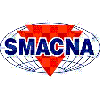An HVAC duct looks to be simple enough.
It’s basically a metal box without ends.
But as many sheet metal workers know, going from steel coil to square duct is a task where labor costs are often high and work is usually physically demanding and loud. Exacting standards and the sophistication of custom mechanical jobs elevate HVAC ductwork to master-craft status.
Almost 30 years ago, company President and Chief Executive Officer Dale Moore founded Moore’s Electrical & Mechanical, in Altavista, Va., with a vision.
“We wanted to build a company that our team members could be proud of, give our customers the best service they had ever experienced and give back to the community we serve,” he said.
Three decades later, that vision remains the same and has served Moore’s well. Its mechanical construction division is among the most cost-effective HVAC duct manufacturers in central Virginia, company officials say.
Customers come first
Moore’s said it constantly strives to put their customers’ needs first. Superb installation practices are a big part of what they offer. Considering themselves true craftsmen, they also constantly strive to improve the quality, timely delivery and cost of their duct system components. To that end, they recently made the investment in their sheet metal fabrication capabilities through the purchase of an automated coil line and several other machines from distributor N.B. Handy Co., located near them in Lynchburg, Va.
The coil line Moore’s installed is a retrofitted Iowa Precision Pro-Fabriduct. The fully automated modular duct manufacturing system has allowed Moore’s team to vastly improve work flow and leverage economies of scale. The Pro-Fabriduct coil line integrates multiple processes into one automated duct-fabricating system including: hydraulically driven de-coiling, straightening/flattening, beading, combination slip-and-drive and TDC notching, tie-rod hole punching, dual side rolling of the drive cleat, hydraulic shearing, Pittsburgh forming (male and female), TDC duplex roll forming, glue extruding, insulation cutting, pinning and wrap braking.
All of this is controlled from the Iowa Precision’s computer-based touch screen, which stores hundreds of duct configurations for easy recall and processing.
Taking full advantage of the automation process, they also purchased several other labor-saving and productive machines to complete the high-quality assemblies. The Iowa Precision Whisper-Loc provides a quiet, automated way to close Pittsburgh seams in less than six seconds. This machine eliminates hammering, speeds up duct seam closing and greatly reduces noise in the shop.
It has other benefits, too, Moore added.
Quieter, more efficient
“The Whisper-Loc reduces noise in the shop that helps us meet important OSHA (Occupational Safety and Health Administration) regulations and keeps our employees safe,” Moore said.
A Cornermatic machine — putting in eight corners in less than minute— rounds out the work station.
Darryl Tysinger, the sheet metal shop mechanic who operates the workstation, said it saves him a lot of time.
“Every one of us has made a ton of hand-fabricated ductwork,” he said. “Because we know exactly what it takes to physically create a duct from a piece of flat metal, we can truly appreciate the simple ingeniousness of these applications. The industry has come a long way through technology, freeing us up to use our knowledge and skill in more creative ways since so much of the repetitive, tedious nature of our work can be mechanized.”
Moore’s also worked with N.B. Handy to tie their coil line in to a Lockformer Vulcan Plus plasma cutter, which streamlines the production and controls the manufacturing of ductwork and related fittings. The computer-numeric-controlled cutting table is programmed to cut rectangular, round and oval ductwork fittings including the connectors, seams and notches.
Another highly productive tool is the Lockformer Vulcan 1600 water jet. This CNC machine automates the insulating cutting process.
“It is amazing to see the power of water to cut insulation as opposed to manually cutting it or using methods that generate too much heat,” said operator Jesse Kirby.
After the insulation is cut, it is fastened to the ductwork with a Duro Dyne RH Pinspotter. Glue is sprayed on in a booth, insulation applied and then fastened and welded to the steel with the pull of a trigger.
Paul Seufer, general manager of N.B. Handy’s machinery group said the investments were very worthwhile.
“It’s been very satisfying to watch these technological innovations enhance the productivity of these very experienced metal workers at Moore’s Electrical & Mechanical,” Seufer said.
Danny Broom, the company’s N.B. Handy account representative, agreed.
“The sense of pride in the Moore’s shop is evident to anyone who visits,” Broom said.
This article and its images were supplied by N.B. Handy Co. For reprints of this article, contact Renee Schuett at (248) 786-1661 or email schuettr@bnpmedia.com.












